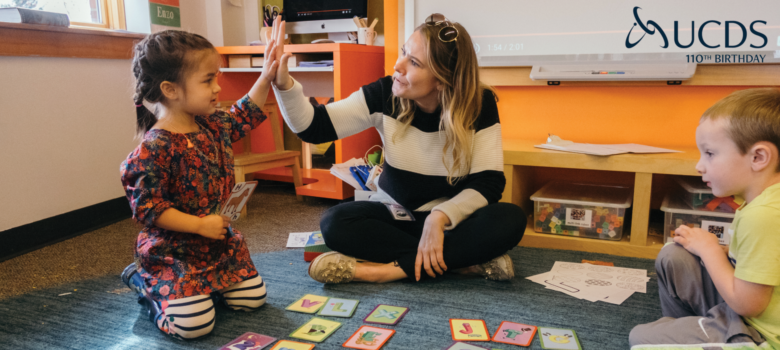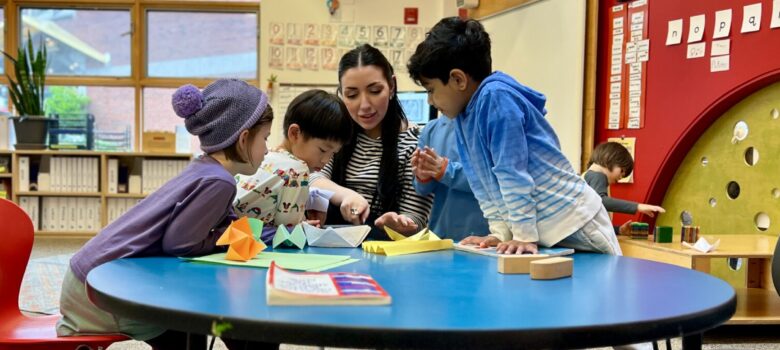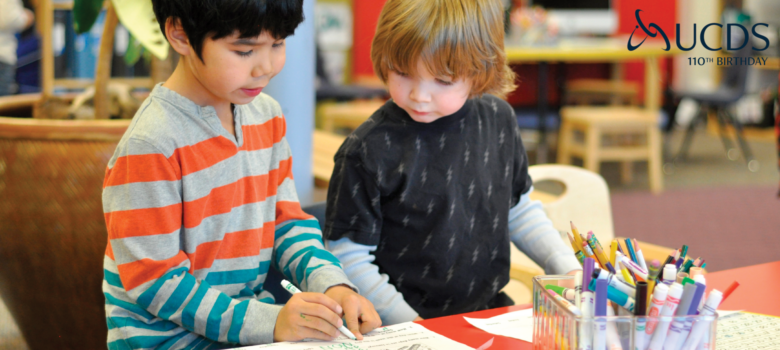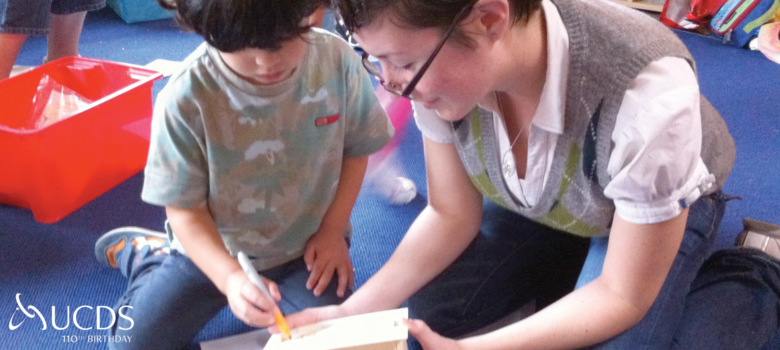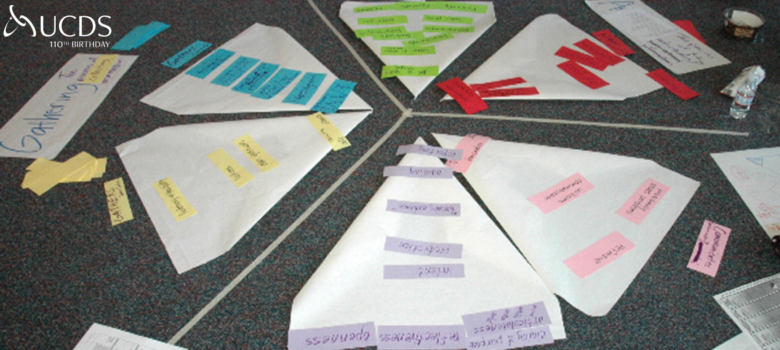UCDS is having a birthday! As we celebrate our 110th year, we are rolling back the clock and re-sharing six highlights of an innovative school: Culture of Inquiry, Sticky Curriculum, Authentic Assessment, Teacher Mentorship through Collaboration, Coaching Independence, and Being Brave. Over the next six weeks, we’ll revisit some in-depth reflections from UCDS Spark Magazine. You can also read full archived content of Spark Magazine at: https://issuu.com/ucds
Plotting a Course to Uncharted Curricula
by Abby Sandberg and Melinda Deal
UCDS Spark
Issue #17, Fall 2018
At UCDS, every school year is like a road trip.
Our planned destination is that each student finds enthusiasm for learning and that he or she ends the year with a plethora of new academic and problem-solving skills. Getting to our destination may not be as simple as moving in a direct route from point A to point B. UCDS teachers, however, are well-traveled in the learning journey. We use our teaching expertise, a set of clearly defined goals, and a reliable toolbox of resources to embark on this excursion in a manner that is responsive to the learning needs of the students. By opening ourselves up to the possibility of alternate routes to our destination, we not only accomplish our intended goals but also reap the benefits of the learning that occurs off the beaten path. When we design for responsiveness in the journey, we make ourselves available for unexpected adventures and sometimes unforeseen challenges to conquer. Throughout the school year, the trips down these side roads, sometimes even off road, result in experiences that are more rewarding than we even imagined. Collaboration among faculty is a key component of these successes. Collaborative teaching requires risk taking, develops shared responsibility, and builds deep trust among colleagues, all of which help make it safe to be brave enough to try something new.
UCDS teachers are keenly attuned to what must be taught, but the “how” of teaching is constantly up for discussion. With the UCDS Continua as a guide to the progression of academic skills students will master, we collaborate with one another to design meaningful opportunities that will help students reach this end. Looking with fresh eyes at the needs and interests of our students as well as the resources in the community, we design, test, and redesign our teaching methods. We do not rely on teaching a particular unit or topic at a specific level; thus, we are always bravely inventing new ways to engage students and make connections between content areas through our unique yearly theme. Because this is our educational model, founded on what we believe is best for children, it is easy—rather than rely on redoing things as they have been done before—to stir the pot and try it in a new way.
Sources of inspiration are unique to each school year. As such, it is no surprise that each learning experience is novel. We are adept at teaching the discrete academic skills on the Continua, but we do so in a way that is responsive to students. As a result, the route to student mastery of these teacher-generated goals typically includes paths on which we have never trod. Because the path is uncharted, we must be willing to courageously begin these learning journeys even if we cannot always see clearly around the bend.
When we, as teachers, courageously embark on designing emergent curricula, we become excellent models for students to see critical thinking, flexibility, and collaboration first hand. Students witness how we address unexpected challenges and see how we call upon each other’s unique skills when a particular quandary takes us out of our current wheelhouse. We question one another, express ideas, and share unique areas of knowledge all in the view of students. Many times this collaboration is evidenced by consulting with Specialist teachers, who can enlighten the teaching team with information and strategies from their individual areas of expertise. For example, after reading an excerpt from the current Read Aloud book, a student query about the natural capabilities of the lead animal character spurred a class discussion that prompted a call from the classroom teacher to the Science Specialist. This modeling teaches students that questions are beneficial, seeking resources is wise, and collaborating with those around you can lead to greater understanding. This is another important benefit of brave teaching.
Although a willingness to take risks is certainly an important component of brave teaching, the collaborative nature of this style of lesson planning makes it feel safer to embark down an unknown path. During the school week, teachers meet regularly across grade level teaching teams and across Specialists’ disciplines. We are courageous in our questioning and project design, posing questions that have multiple solutions, which we have not always worked out ourselves. It is common to hear questioning such as, “What if we…..?” or “How about we try….?” Many times, our planning prompts projects for which we will have to observe students’ responses to determine how best to proceed through. During this process, we weigh pros and cons of potential paths, bravely assert ideas, and reach compromise. The entire teaching team takes ownership over the learning experience. We celebrate successes together, and we solve unexpected challenges collaboratively. This safety net of colleagues provides a platform for courageously forging ahead when you are not certain which path will lead to your goal.
Every instance of brave teaching supports future courageous endeavors. The more often we call upon the expertise of one another, the more knowledgeable we become about each individual’s unique skillsets. As we courageously work with a wide range of colleagues, the more familiar those individuals become and the greater comfort everyone experiences during these collaborations. For example, an upcoming solar eclipse prompted us to design an experience for students to learn about this phenomenon. Classroom teachers and the Science Specialist certainly had knowledge to impart. However, when we discovered that the school’s Director of Technology was an avid stargazer, we saw a great opportunity to expand the teaching team and call upon his expertise. Collaborations between all of these parties resulted in an afternoon viewing experience that students and parents engaged in together. While this outcome was deemed a success, an even greater benefit of this collaboration was the shared connection among those involved in the experience.

